CR8894SXF+ Anti-Jamming Four Element Controlled Reception Pattern Antenna (CRPA)
Calian’s CR8894SXF+ GNSS Controlled Reception Pattern Antenna (CRPA) can mitigate/null one (1) interference or jamming signals in both the lower (1189 -1254 MHz) and upper (1559 – 1591 MHz) GNSS bands for a total of two (2) nulls. The CR8894SXF+ is a 4-element CRPA designed for dual-band Global Navigation Satellite System (GNSS) signal reception. It supports GPS L1/L2, Galileo E1/E5b, GLONASS G2/G3, and BeiDou B1/B2b signal bands. The wide bandwidth antenna elements also support GPS M-Codes on both L1 and L2.
Interference or jamming can saturate a standard GNSS antenna’s Low Noise Amplifier (LNA), making it unusable. Calian’s CR8894SXF+ uses two interference-mitigating technologies: eXtended Filtering+ (XF+) and Controlled Reception Pattern Antenna. XF+ features > 80 dB of out-of-band rejection from 400 MHz to 3000 MHz and separates the LNA’s upper and lower signal amplification channels, if one is channel is jammed the other remains usable. CRPA technology creates radiation pattern nulls in the direction of the interference/jammer, preventing LNA saturation and ensuring a usable GNSS signal. The output is a standard RF signal with the interference removed and a signal that is compatible with all Commercial Off The Shelf (COTS) GNSS receivers.
The CR8894SXF+ uses Tallysman Accutenna® technology and a low-power analog interference detection and mitigation methodology. It integrates the antenna, null-forming, and interference mitigation technology into a compact, lightweight surface-mount enclosure. Two serial interfaces are provided: one supports RS232, the other RS422. These interfaces output NMEA messages that contain jamming detection, mitigation status, jammer band, and direction relative to the antenna, enhancing situational awareness.
The lightweight, waterproof (IP69K) rugged enclosure withstands harsh conditions, including military, drone, and vehicle applications. The CR8894SXF+ CRPA is surface-mounted using four screws. A standard RF connector (SMA or TNC) and serial interface connectors are centrally located, properly sealed to prevent water ingression.
A future version of CR8894SXF+ antenna will support three (3) nulls per band.
Trust Calian to provide a clean RF signal in a noisy RF world.
Applications
- Critical Timing
- Navigation in contested environs
- Critical Infrastructure GNSS (airports, etc.)
- Law enforcement and public safety
Features
- Dual band GNSS signal support
- Supports eXtended Filtering+ (XF+) providing sharp out-of-band signal rejection
- Up to 20-40 dB null depth
- Serial interface provides state information and estimated jammer direction
- IP69K water proof housing
Benefits
- Compatible with standard GNSS receivers
- Very low power consumption (140 mA)
- Small, lightweight, and low-profile form factor makes it ideal for many uses
- Supports situational awareness, indicates CRPA state: jamming observed/mitigated, frequency, and direction
Request a Datasheet
Contact Calian GNSS to request a datasheet
CR7712EXF Anti-Jam Two Element Controlled Reception Pattern Antenna (CRPA)
Calian’s CR7712EXF embedded Controlled Reception Pattern Antenna (CRPA) GNSS antenna steers 1 planar null to mitigate interference or jamming signals in the upper GNSS band (1559 – 1606 MHz). The output of the CR7712EXF is a standard RF signal (compatible with all Commercial Off The Shelf (COTS) GNSS receivers) with the interference/jamming signals removed. The CR7712EXF also has a serial interface that provides antenna state information indicating jamming detected or not. This feature allows the user to quickly understand the GNSS signal status.
The CR7712EXF utilizes the patented Tallysman Accutenna® technology and a new very low power analog interference detection and mitigation methodology. The product integrates the antenna, interference mitigation, and null forming technology into a light weight and compact enclosure.
The CR7712EXF is a 2-element CRPA designed for single-band Global Navigation Satellite System (GNSS) signal reception. It supports: GPS L1, Galileo E1, GLONASS G1 and BeiDou B1 signal bands. The wide bandwidth antenna elements support the GPS M-Codes on L1.
Intentional and unintentional interference or jamming can saturate a standard GNSS antenna’s Low Noise Amplifier (LNA) such that it may not provide a usable signal. Calian’s CR7712EXF employs two interference mitigating technologies: eXtended Filtering (XF) and Controlled Reception Pattern Antenna (CRPA). XF provides > 80 dB of out of band rejection from 400 MHz to 3000 MHz. Additionally, XF has very sharp band edges around the GNSS bands. CRPA technology creates radio frequency nulls in the direction of the interference/jammer and as a result the antenna provides a clean GNSS signal.
The CR7712EXF embedded CRPA is surface mounted using screws. A standard antenna radio frequency MCX connector and a serial interface connector are the interfaces provided.
Trust Calian to provide a clean RF signal in a noisy RF world.
Applications
- Critical Timing
- Navigation in contested environs
- Critical Infrastructure GNSS (airports, etc.)
- Law enforcement and public safety
Features
- Formation of 1 planar null
- Single band GNSS signal support
- Supports eXtended Filtering (XF) providing sharp out-of-band signal rejection
- Up to 20 dB null depth
- Serial Interface provides state information
Benefits
- Compatible with standard GNSS receivers
- Very low power consumption (60 mA typ.)
- Small, lightweight, and low-profile form factor makes it ideal for many uses
- Supports situation awareness, indicates CRPA state
Request a Datasheet
Contact Calian GNSS to request a datasheet
TW5398 Smart GNSS Antenna SDK – Preliminary
Introducing the new TW5398 Smart GNSS Antenna SDK, unlocking the full band GNSS revolution with Calian’s Full Band GNSS Antenna technology integrated with u-blox’ new ZED-X20P GNSS receiver module.
TP5398SDK availability is dependent on u-blox market introduction of the ZED-X20P product. Pricing and availability will be released as soon as possible.
If you would like information as soon as it is available and to get into the queue for early samples, please sign up to our ZED-X20P mailing list here.
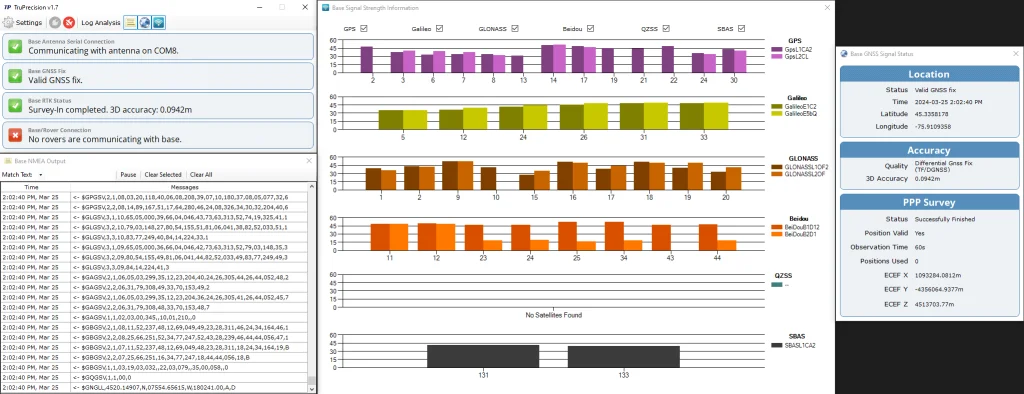

Sign up for early access
Get instant updates on product launch date. Please fill out the form below.
The TP5398SDK is a Software Development Kit that showcases Calian’s new Full Band Smart GNSS TW5398 Smart GNSS Antenna, which integrates the u-blox ZED-X20P GNSS receiver. The TW5398 builds upon Calian’s experience integrating our industry leading Tallysman full-band + L-Band GNSS antennas with u-blox GNSS receiver modules to deliver the best plug and play experience for the new u-blox full band ZED-X20P GNSS receiver module. Accutenna® Patch antenna coupled with eXtended Filtering (XF) delivers pristine L1, L2, L5, L6/E6 + L-Band signals to the u-blox ZED-X20P to deliver cm-level performance and support for new services such as Galileo’s High Accuracy Service (HAS) and anti-spoofing Open Service Navigation Message Authentication (OSNMA). TW5398 presents a u-blox API to the host system over RS-232 or RS-422 serial link with an RJ45 connector.
The TP5398SDK adds a serial to USB converter to the TW5398 for easy connection to a PC running Calian’s TruPrecision GNSS dashboard software, a comprehensive software toolbox for evaluating every aspect of the TW5398, with configuration tools, status console, satellite monitoring, NMEA logging and NTRIP client for local and network corrections set-up. We even give you a ROS2® driver for software integration into your robotics applications! Finally, we top it off by providing complimentary trials of compatible services from our partners: ublox PointPerfect Flex, Swift Navigation Skylark and Point One Navigation Polaris*.
*Note available services will depend on compatibility testing with ublox ZED-X20P



TP5398SDK includes:
- 1 x Calian TW5398 Full Band Smart GNSS Antenna/Receiver
- 33-5398-09-10-05-PC0 (RS-422) (TP5398SDK-0) or 33-5398-69-10-05-PC0 (RS-232) (TP5398SDK-6)
- 1 x Calian USB Serial Bridge
- 33-0095-11 (RS-422) (TP5398SDK-0) or 33-0095-16 (RS-232) (TP5398SDK-6)
- 1 x 23-00067-0: 10 cm Aluminium Ground Plane
- Calian TruPrecision GNSS Dashboard Application
- Complimentary trials of compatible corrections services* from our partners:
- u-blox PointPerfect-Flex
- Swift Navigation Skylark RTK
- Point One Navigation Polaris RTK
*Note available services will depend on compatibility testing with ublox ZED-X20P
Ordering Information
- 33-TP5398SDK-0 (RS-422 RJ45)
- 33-TP5398SDK-6 (RS-232, Tx1/Rx1, Tx2/Rx2, RJ45)
The TruPrecison SDK application is a Windows application which provides an NTRIP connection to stream Skylark corrections to the TW5398 Smart Full Band GNSS Antenna via the antenna’s serial port, and also provides a Virtual COM Port to allow customers to connect their existing applications to the TW5398 Smart GNSS Precise Heading Antenna high precision “corrected” position data output. The position data may be either NMEA or UBX formatted messages. ROS2® Drivers are available for integration with ROS2 open framework projects.

ROS2® Drivers
https://github.com/Calian-gnss/calian-gnss-ROS2-drivers

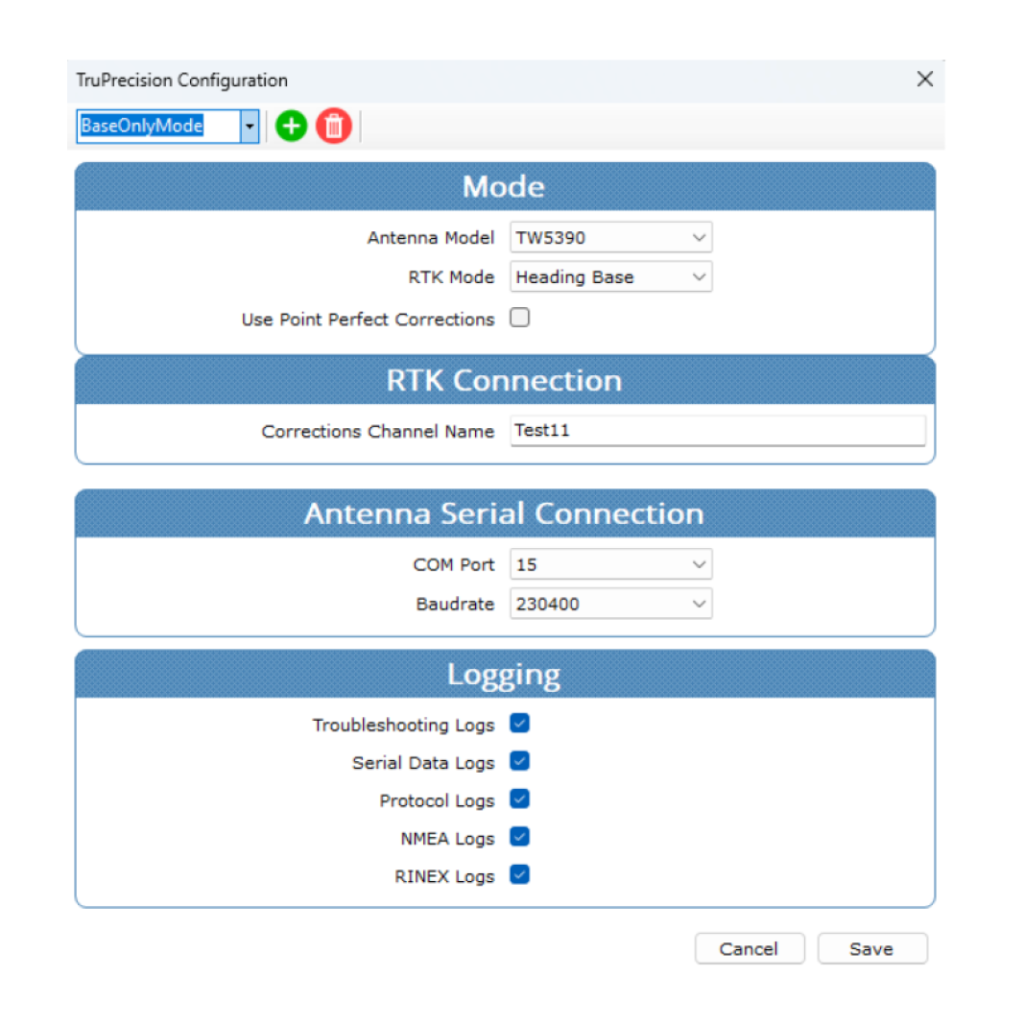
HCS885XF-PTONE L1/L5 Smart GNSS Helical SDK
Calian’s HCS885XF Smart GNSS Helical Antenna is the Plug and Play, light weight, low power L1/L5 solution for Handheld Devices, Robots and Drones. BUY ONLINE.
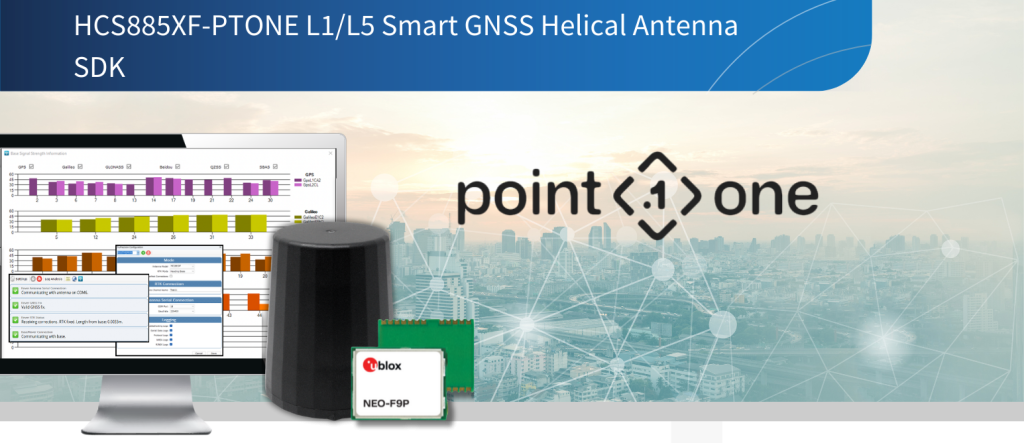
The HCS885XFSDK-PTONE Smart GNSS Helical SDK is the best way to fast track precise location and heading in your project. The L5 enhanced signal architecture with stronger broadcast signal offers more precise standard localization and improved multi-path mitigation while operating in an ITU/ARNS aviation band with regulatory interference protection. The SDK includes one* HCS885XF Smart GNSS Precise Heading Helical Antenna with serial to USB bridge to connect to your PC. TruPrecision software simplifies the User Interface to the antenna’s GNSS receiver, and provides extras such as logging tools, GNSS signal strength graphs and message routing for sharing RTCM between base and rover antenna pairs across the internet. It also includes 1 year complimentary license to Polaris RTK corrections from Point One Navigation for quickly applying corrections (RTK or PPP-RTK) to the antenna. ROS2® drivers also available.
Get a free year of GNSS Corrections for your Calian Antenna
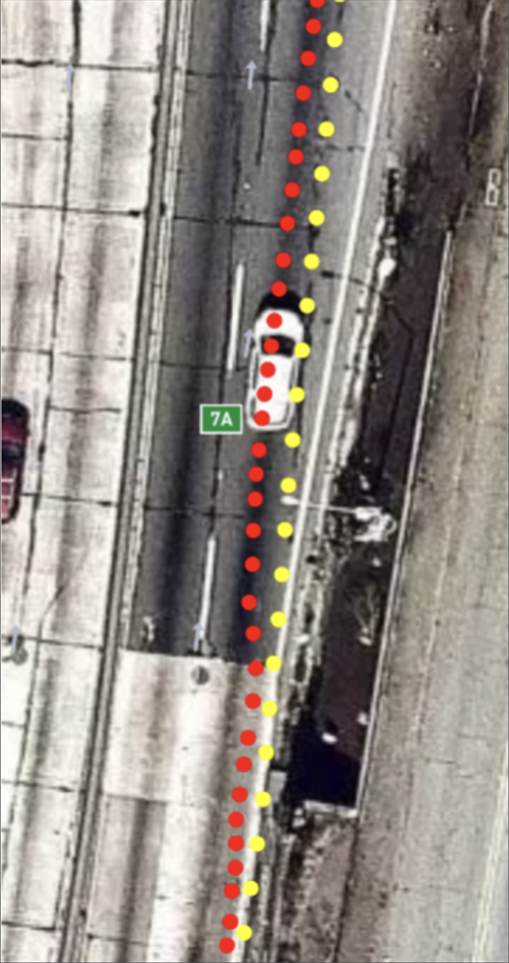
Access centimeter-level accuracy with the world’s largest, professionally-run RTK and SSR corrections network. Get unmatched coverage, accuracy, and reliability while making your device 100x times more accurate than traditional GNSS.
With an actively monitored and remotely managed network of thousands of base stations that have 99.9% uptime, reliability is something you’ll never have to question. With Point One Navigation, you can integrate your location data via our web applications or build your own with the Point One API. A powerful, modern single endpoint GraphQL API that lets you provision, manage, and deploy as you scale. And, enjoy access to a responsive global beacon-on-demand program to reach even the most challenging environments.
Learn more about Polaris at https://pointonenav.com/calian-dev-kit

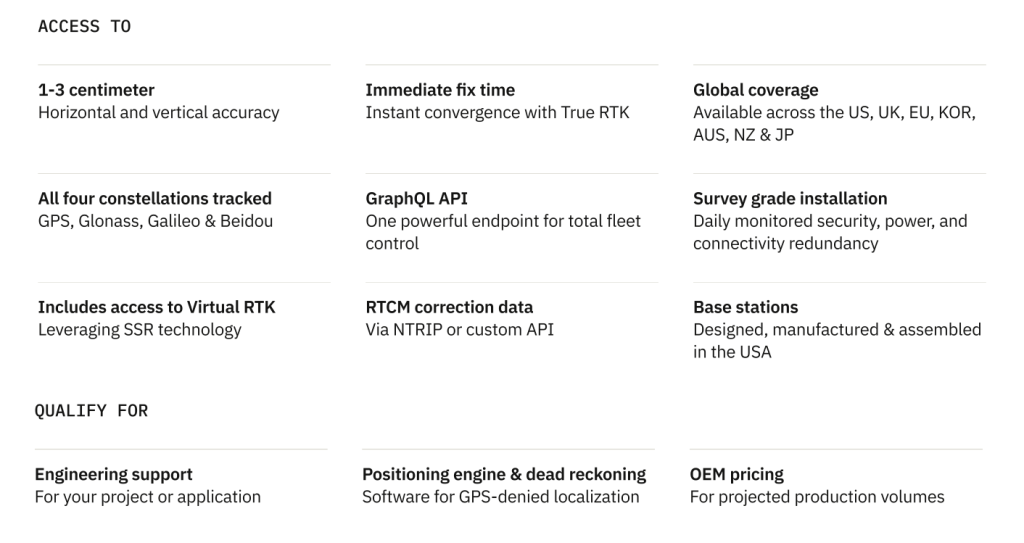

HCS885XFSDK-PTONE Smart GNSS Helical SDK includes:
- 1 x Tallysman 33-HCS885XF-49 Smart GNSS Precise Heading helical antenna with CMOS interface
- Calian TruPrecision Application for Software Development and Verification
- 1-year complimentary license to Polaris RTK corrections from Point One Navigation
- 1 x JST to USB cable
- Ordering Information:
- 33-HCS885XFSDK-PTONE-4 (CMOS)
The TruPrecison SDK application is a Windows application to provision your new HCS885XF Smart Antenna with a connection and license to Polaris RTK corrections from Point One Navigation. Once provisioned, the antenna continuously generates high precision “corrected” position data output as NMEA or UBX formatted messages. The included USB-to-Serial Bridge provides a virtual COM port to allow customers to connect their onboard navigation and mapping applications to receive these messages from the Calian Smart GNSS Antenna in real-time. ROS2® Drivers are available for integration with ROS2 open framework projects.
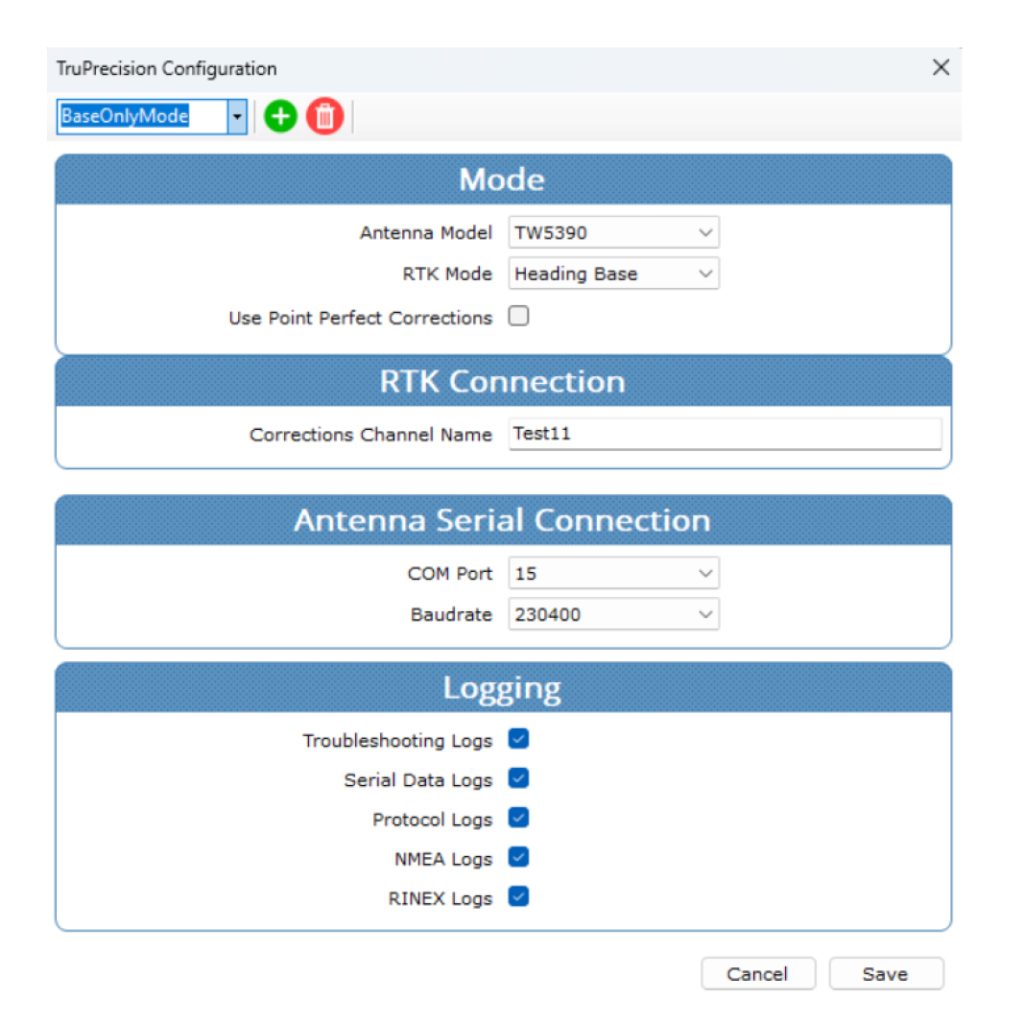

TP5790-PTONE SDK – High Precision Smart GNSS Antenna with Inertial Measurement Unit and RTK
Calian’s High Precision Tallysman Smart GNSS antennas integrate advanced receivers with High Precision Tallysman GNSS antennas, connecting Position, Navigation and Timing resources to host systems over digital interfaces. BUY ONLINE.
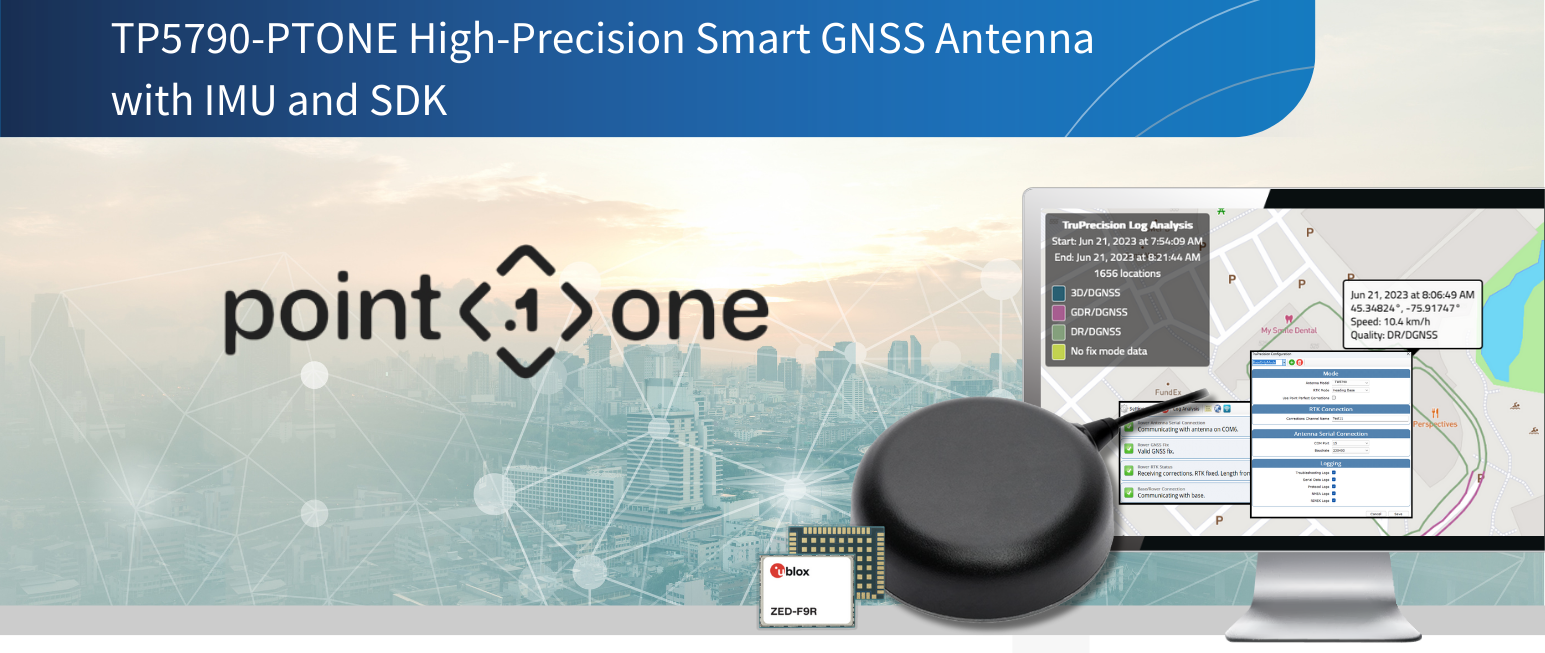
Calian’s High Precision Tallysman Smart GNSS antennas integrate advanced receivers with High Precision Tallysman GNSS antennas, connecting Position, Navigation and Timing resources to host systems over digital interfaces.
Calian Smart GNSS SDK’s are a plug and play evaluation platform for Calian’s Smart Antennas, with tools such as: TruPrecision Software, a 1-year complimentary license to Polaris RTK corrections from Point One Navigation and simple connection to a PC.
The TP5790SDK-PTONE supports the TW5790 High Precision GNSS Smart Antenna with IMU. It features:
- NMEA monitoring, satellite visibility and signal strength, GNSS status monitoring, Inertial Measurement Unit monitoring and logging tools, with visual state heat-map
- Status console to pinpoint issues between antenna, connections and network corrections
Get a free year of GNSS Corrections for your Calian Antenna

Access centimeter-level accuracy with the world’s largest, professionally-run RTK and SSR corrections network. Get unmatched coverage, accuracy, and reliability while making your device 100x times more accurate than traditional GNSS.
With an actively monitored and remotely managed network of thousands of base stations that have 99.9% uptime, reliability is something you’ll never have to question. With Point One Navigation, you can integrate your location data via our web applications or build your own with the Point One API. A powerful, modern single endpoint GraphQL API that lets you provision, manage, and deploy as you scale. And, enjoy access to a responsive global beacon-on-demand program to reach even the most challenging environments.
Learn more about Polaris at https://pointonenav.com/calian-dev-kit



TP5790-PTONE Precise Heading SDK includes:
- 1 x Calian TW5790 Smart GNSS High Precision (with IMU) antenna (see below ordering information)
- 1 x 23-0067-14: ten cm ground plane
- Calian TruPrecision Application for Software Development and Verification
- 1-year complimentary license to Polaris RTK corrections from Point One Navigation
The TruPrecison SDK application is a Windows application to provision your new TW5790 Smart Antenna with a connection and license to Polaris RTK corrections from Point One Navigation. Once provisioned, the antenna continuously generates high precision “corrected” position data output as NMEA or UBX formatted messages. The included USB-to-Serial Bridge provides a virtual COM port to allow customers to connect their onboard navigation and mapping applications to receive these messages from the Calian Smart GNSS Antenna in real-time. ROS2® Drivers are available for integration with ROS2 open framework projects.


TP5387SDK-PTONE High-Precision Smart L1/L5 GNSS SDK
Calian’s TW5387 High Precision Tallysman Smart L1/L5 GNSS Antenna with Point One Navigation’s centimeter accurate Polaris RTK corrections provides the instant-on solution for L1/L5 and cPNT applications that need the fastest fix in the industry. BUY ONLINE
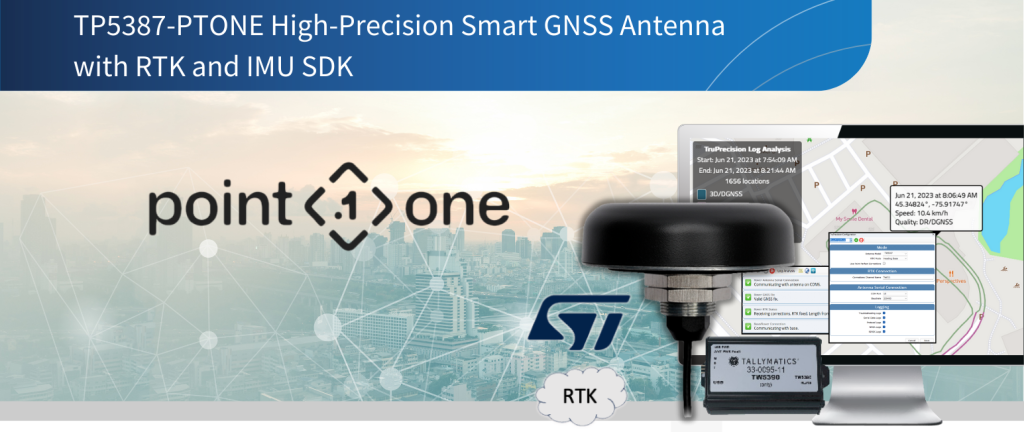
Calian’s High Precision Tallysman Smart GNSS antennas integrate advanced receivers with High Precision Tallysman GNSS antennas, connecting position, navigation and timing resources to host systems over digital interfaces. The TW5387 Software Development Kit (SDK) with Polaris RTK corrections from Point One Navigation supports the TW5387 High Precision L1/L5 Smart GNSS Antenna, which incorporates a Quectel LG69TAP receiver module with onboard ST TESEO V receiver and Inertial Measurement Unit (IMU). The SDK includes Calian’s GNSS dashboard/evaluation software TruPrecision. It also includes a 1-year complimentary license to Polaris RTK corrections from Point One Navigation, with an easy process for quickly applying RTK corrections to your TW5387 Smart antenna..
Get a free year of GNSS Corrections for your Calian Antenna

Access centimeter-level accuracy with the world’s largest, professionally-run RTK and SSR corrections network. Get unmatched coverage, accuracy, and reliability while making your device 100x times more accurate than traditional GNSS.
With an actively monitored and remotely managed network of thousands of base stations that have 99.9% uptime, reliability is something you’ll never have to question. With Point One Navigation, you can integrate your location data via our web applications or build your own with the Point One API. A powerful, modern single endpoint GraphQL API that lets you provision, manage, and deploy as you scale. And, enjoy access to a responsive global beacon-on-demand program to reach even the most challenging environments.
Learn more about Polaris at https://pointonenav.com/calian-dev-kit



TP5387SDK-PTONE Precision GNSS Antenna with IMU SDK includes:
- 1 x Calian TW5387 Smart GNSS High Precision (IMU) antenna (see below ordering information)
- 1 x 23-0067-0: 10 cm ground plane
- Calian TruPrecision Application for Software Development and Verification
- 1-year complimentary license to Polaris RTK corrections from Point One Navigation
The TruPrecison SDK application is a Windows application to provision your new TW5387 Smart Antenna with a connection and license to Polaris RTK corrections from Point One Navigation. Once provisioned, the antenna continuously generates high precision “corrected” position data output as NMEA formatted messages. The included USB-to-Serial Bridge provides a virtual COM port to allow customers to connect their onboard navigation and mapping applications to receive these messages from the Calian Smart GNSS Antenna in real-time.


TP5794-PTONE Moving Base Precise Heading SDK
Calian’s TW5794 Smart GNSS Precise Heading Antenna with Point One Navigation Polaris RTK Service is the Plug and Play solution for Precise Heading evaluation. BUY ONLINE

The TW5794-PTONE Precise Heading SDK is the best way to get started. It includes a TW5794 Smart GNSS Precise Heading Antenna with USB to connect into your PC. TruPrecision software simplifies the User Interface to the antenna’s GNSS receiver, and provides extras such as logging tools, GNSS signal strength graphs, and tools for local Base/Rover RTK. It also includes a 1-year complimentary license to Polaris RTK corrections from Point One Navigation, with an easy process for quickly applying Polaris corrections to your SDK antenna.
Get a free year of GNSS Corrections for your Calian Antenna

Access centimeter-level accuracy with the world’s largest, professionally-run RTK and SSR corrections network. Get unmatched coverage, accuracy, and reliability while making your device 100x times more accurate than traditional GNSS.
With an actively monitored and remotely managed network of thousands of base stations that have 99.9% uptime, reliability is something you’ll never have to question. With Point One Navigation, you can integrate your location data via our web applications or build your own with the Point One API. A powerful, modern single endpoint GraphQL API that lets you provision, manage, and deploy as you scale. And, enjoy access to a responsive global beacon-on-demand program to reach even the most challenging environments.
Learn more about Polaris at https://pointonenav.com/calian-dev-kit



TP5794-PTONE Precise Heading SDK includes:
- 1 x Tallysman TW5794 Smart GNSS Precise Heading antenna with USB or RS-232 (see below ordering information)
- 1 x 23-0067-14: ten cm ground plane
- Calian’s TruPrecision Application for Software Development and Verification
- 1-year complimentary license to Polaris RTK corrections from Point One Navigation.
The TruPrecison SDK application is a Windows application to provision your new TW5794 Smart Antenna with a connection and license to Polaris RTK corrections from Point One Navigation. Once provisioned, the antenna continuously generates high precision “corrected” position data output as NMEA or UBX formatted messages. The included USB-to-Serial Bridge provides a virtual COM port to allow customers to connect their onboard navigation and mapping applications to receive these messages from the Calian Smart GNSS Antenna in real-time. ROS2® Drivers are available for integration with ROS2 open framework projects.


TW3885TL Multi-Constellation Dual-Band Timing Antenna (built-in Lightning Arrestor)
The TW3885TL is a precision-tuned dual-band, Accutenna® technology, timing antenna providing GPS/QZSS-L1/L5, GLONASS-G1/G3, Galileo-E1/E5a/E5b, BeiDou-B1/B2a/B2 and NavIC-L5, including the satellite-based augmentation system (SBAS) available in the region of operation [WAAS (North America), EGNOS (Europe), MSAS (Japan), or GAGAN (India)].
Applications
- Precise Timing
Features
- Very low noise preamp (< 2.5 dB typ.)
- Low axial ratio (< 2.0 dB typ.)
- Tight phase centre variation
- High-gain LNA (40 dB typ.)
- Low current (32 mA typ.)
- Invariant performance from 2.5 to 16 VDC
- 5 kA, 8/20 μs built-in lightning arrestor
Benefits
- Excellent multipath rejection
- Increased system accuracy
- Excellent signal-to-noise ratio
- Built-in surge protection
- CE RED, RoHS, and REACH compliant
TP5387-SWNAV High-Precision Smart L1/L5 GNSS SDK
Calian’s TW5387 High Precision Tallysman Smart L1/L5 GNSS Antenna with Swift Navigation Skylark Precise Positioning Service is the Plug and Play solution for L1/L5 and cPNT applications. BUY ONLINE
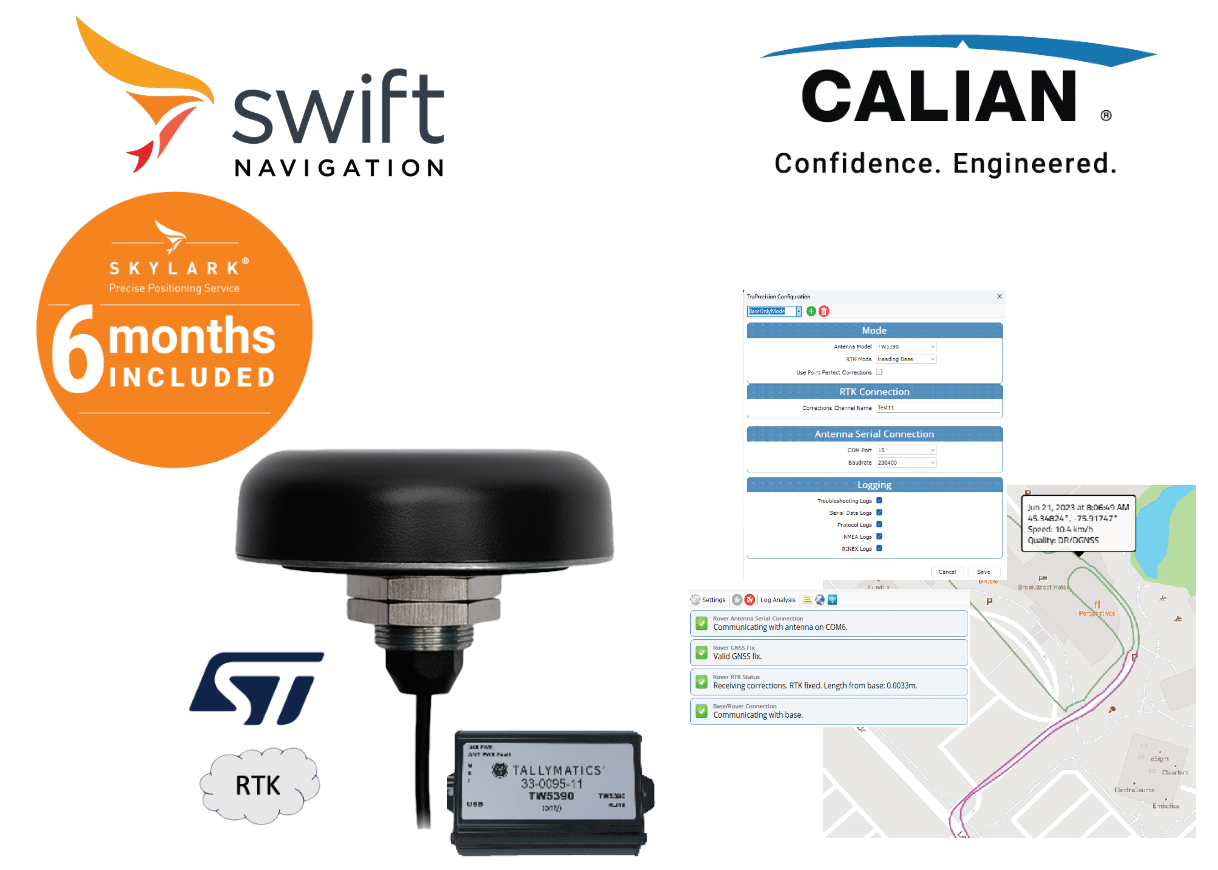
Calian’s High Precision Tallysman Smart GNSS antennas integrate advanced receivers with High Precision Tallysman GNSS antennas, connecting Position, Navigation and Timing resources to host systems over digital interfaces. The TW5387 Software Development Kit (SDK) for Swift Navigation’s Skylark Precise Positioning Service supports the TW5387 High Precision L1/L5 Smart GNSS Antenna, which incorporates a Quectel LG69TAP receiver module with onboard ST TESEO V receiver and Inertial Measurement Unit (IMU). The SDK includes Calian’s GNSS dashboard/evaluation software TruPrecision. It also includes 6 months of complementary access to Swift Navigations’s Skylark Cx Precise Positioning Service with an easy process for quickly applying Skylark corrections to your GNSS Antenna.

Swift Navigation’s Skylark® Precise Positioning Service is a global, cloud-based GNSS corrections service that delivers reliable precision continent-wide. Designed to meet diverse application needs, Skylark is available in three distinct variants—Skylark Cx, Nx RTK, and Dx—each optimized for specific use cases, ensuring the right balance of performance and practicality.
Skylark Cx is a PPP-RTK corrections service that delivers uniform centimeter-level accuracy across continents. With 3–7 cm accuracy and a fast convergence time of under 20 seconds, its performance remains consistent, regardless of distance from base stations—providing seamless accuracy at a national and continental scale.
Learn more about Skylark at https://www.swiftnav.com/products/skylark
TP5387-SWNAV Precision GNSS Antenna with IMU SDK includes:
- 1 x Calian TW5387 Smart GNSS High Precision (IMU) antenna (see below ordering information)
- 1 x 23-0067-0: 10 cm ground plane
- Calian TruPrecision Application for Software Development and Verification
- 6 month trial subscription to the Swift Navigation Skylark Cx Precise Positioning Service
The TruPrecison SDK application is a Windows service which provides an autonomous connection to stream Skylark corrections to the TW5387 Smart Antenna via a USB to Serial Bridge which also provides a Virtual COM Port to allow customers to connect their existing applications to the Calian Smart GNSS Antenna high precision “corrected” position data output as NMEA formatted messages.
.
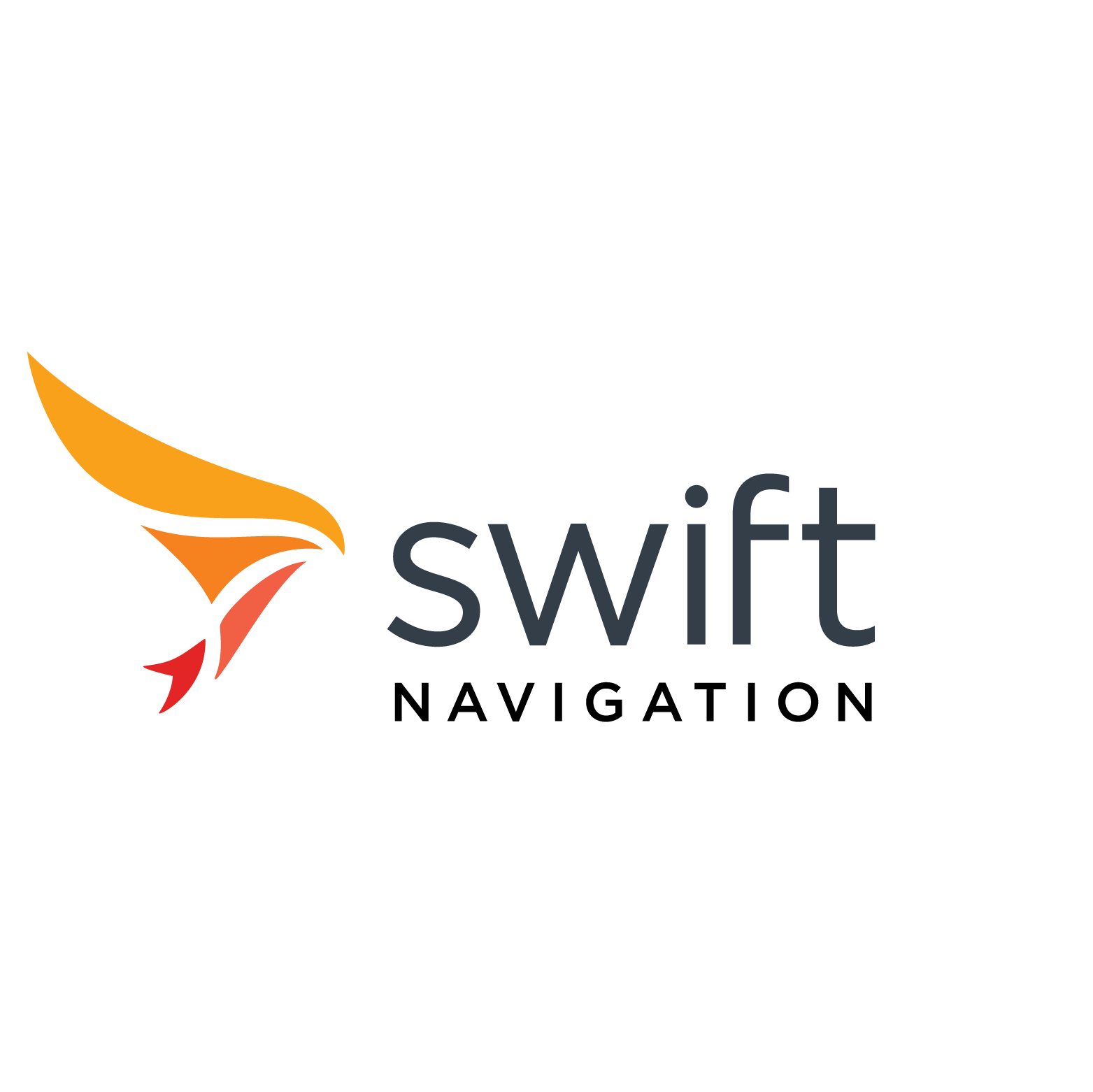

HCS885XF-SWNAV L1/L5 Smart GNSS Helical SDK
Calian’s HCS885XF Smart GNSS Helical Antenna is the Plug and Play, light weight, low power L1/L5 solution for Handheld Devices, Robots and Drones. BUY ONLINE.
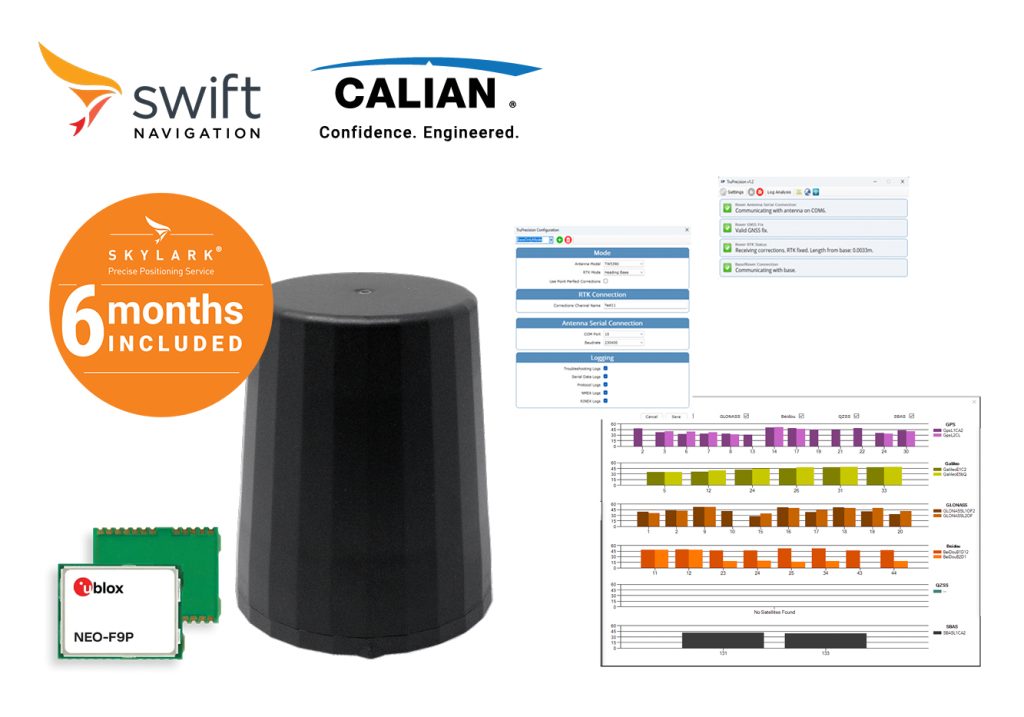
The HCS885XFSDK Smart GNSS Helical SDK is the best way to fast track precise location and heading in your project. The L5 enhanced signal architecture with stronger broadcast signal offers more precise standard localization and improved multi-path mitigation while operating in an ITU/ARNS aviation band with regulatory interference protection. The SDK includes one* HCS885XF Smart GNSS Precise Heading Helical Antenna with serial to USB bridge to connect to your PC. TruPrecision software simplifies the User Interface to the antenna’s GNSS receiver, and provides extras such as logging tools, GNSS signal strength graphs and message routing for sharing RTCM between base and rover antenna pairs across the internet. It also includes a 6 month complementary access to Swift Navigation’s Skylark Cx Corrections, with an easy process for quickly applying corrections (RTK or PPP-RTK) to the antenna. ROS2® drivers also available.

Swift Navigation’s Skylark® Precise Positioning Service is a global, cloud-based GNSS corrections service that delivers reliable precision continent-wide. Designed to meet diverse application needs, Skylark is available in three distinct variants—Skylark Cx, Nx RTK, and Dx—each optimized for specific use cases, ensuring the right balance of performance and practicality.
Skylark Cx is a PPP-RTK corrections service that delivers uniform centimeter-level accuracy across continents. With 3–7 cm accuracy and a fast convergence time of under 20 seconds, its performance remains consistent, regardless of distance from base stations—providing seamless accuracy at a national and continental scale.
Learn more about Skylark at https://www.swiftnav.com/products/skylark
HCS885XFSDK Smart GNSS Helical SDK includes:
- 1 x Tallysman 33-HCS885XF-49 Smart GNSS Precise Heading helical antenna with CMOS interface
- Calian TruPrecision Application for Software Development and Verification
- 6 month trial subscription to the Swift Navigation Skylark Cx Precision Positioning service
- 1 x JST to USB cable
- Ordering Information:
- 33-HCS885XFSDK-SWNAV-4 (CMOS)
- 33-HCS885XFSDK-SWNAV-2 (RS-232)
The TruPrecison SDK application is a Windows application which provides an NTRIP connection to stream Skylark corrections to the HCS885XF Smart Antenna via USB, which also provides a Virtual COM Port to allow customers to connect their existing applications to the Tallysman HCS885XF Smart GNSS Precise Heading Antenna high precision “corrected” position data output. The position data may be either NMEA or UBX formatted messages. ROS2® Drivers are available for integration with ROS2 open framework projects.

ROS2® Drivers
https://github.com/Calian-gnss/calian-gnss-ROS2-drivers

